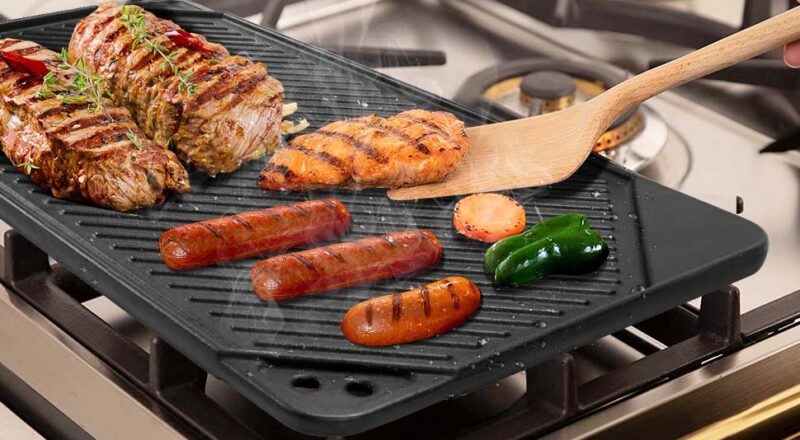When it comes to cooking, ensuring that your tools are properly prepared can make all the difference. This is especially true for a versatile kitchen tool like a reversible griddle. In this article, we will delve into essential reversible griddle preheating tips that will elevate your cooking experience. Whether you’re a seasoned chef or a home cooking enthusiast, understanding the nuances of preheating can enhance the flavors and textures of your dishes.

Understanding the Importance of Preheating
Properly preheating your griddle is crucial for several reasons. It ensures even cooking, prevents sticking, and enhances the flavor of your food. A well-preheated griddle provides a consistent cooking surface, which is essential for achieving the perfect sear, crust, or caramelization on your dishes.
How to Preheat Your Reversible Griddle
1. Choose the Right Heat Source
Before you begin, select the appropriate heat source for your griddle. Most reversible griddles are compatible with various stovetops, including gas, electric, and induction. Ensure your griddle is suitable for your cooking appliance. For more details on compatible stovetops, visit griddle stovetops.
2. Gradual Heating
Begin with a low heat setting and gradually increase the temperature. This prevents warping and ensures the griddle heats evenly. Avoid starting on high heat, which can cause uneven hotspots, leading to inconsistent cooking results.
3. Test the Heat
To test if your griddle is ready, sprinkle a few drops of water on the surface. If the water sizzles and evaporates quickly, your griddle is preheated and ready for use.
Preheating Tips for Different Foods
1. For Meats
When cooking meats, preheat your griddle to a higher temperature to achieve a good sear. This locks in juices and enhances flavor. Allow the meat to reach room temperature before placing it on the griddle to ensure even cooking.
2. For Vegetables
Vegetables require moderate heat to cook evenly without burning. Preheat your griddle to a medium setting and add a little oil to prevent sticking. This helps in achieving a delicious, caramelized exterior.
3. For Pancakes and Crepes
For pancakes and crepes, a lower temperature is ideal. Preheat the griddle to a gentle heat to ensure the batter cooks through without burning. This results in light, fluffy pancakes or delicate crepes.
Safety Measures During Preheating
While preheating, ensure your cooking area is well-ventilated. Keep a close eye on the griddle to prevent overheating, which can be hazardous. Always use oven mitts or heat-resistant gloves when handling a hot griddle.
Maintaining Your Griddle
Proper maintenance extends the life of your griddle. After cooking, allow it to cool before cleaning. Use a suitable brush or scraper to remove food residues. For more tips, explore griddle care.
Common Mistakes to Avoid
1. Skipping Preheating
Never skip preheating. Placing food on a cold griddle leads to uneven cooking and can cause sticking.
2. Using High Heat Immediately
Starting with high heat can warp your griddle and lead to hotspots. Always begin with a lower temperature and increase gradually.
Choosing the Right Griddle
Selecting the right griddle is as important as preheating. Consider factors like material, size, and compatibility with your stove. For budget-friendly options, check out the best griddles under $50.
Expert Insights on Griddle Cooking
For those looking to refine their skills, expert insights on griddle cooking can be invaluable. Learn from seasoned chefs by visiting Blackstone Recipes.
Conclusion
Mastering the art of preheating your reversible griddle can significantly enhance your culinary creations. By following these tips, you’ll ensure even cooking, improved flavors, and an enjoyable cooking experience. Remember, patience and careful attention to detail are key to achieving the best results.

FAQs
1. Why is preheating a griddle important?
Preheating ensures that food cooks evenly and prevents sticking, resulting in better flavor and texture.
2. How long should I preheat my griddle?
Typically, preheating takes about 10-15 minutes, depending on the material and thickness of the griddle.
3. Can I preheat a griddle in the oven?
Yes, you can preheat a griddle in the oven, especially if it’s made of cast iron. This method ensures even heating.
This article contains affiliate links. We may earn a commission at no extra cost to you.

